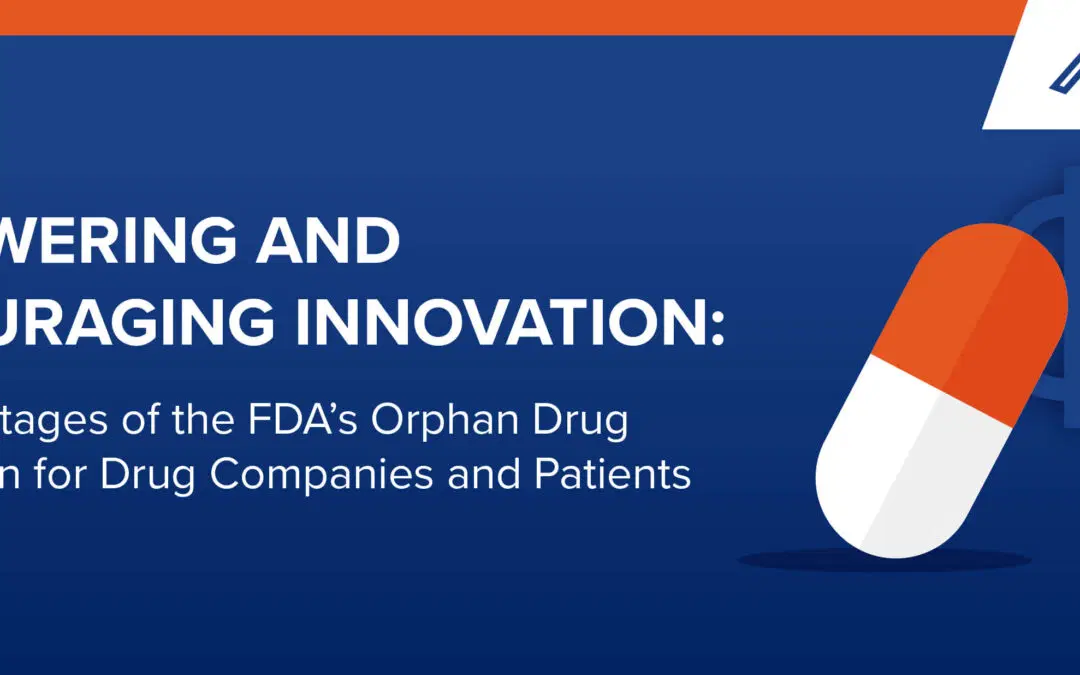It’s imperative that biopharma organizations developing innovative treatments for rare diseases navigate the FDA’s Orphan Drug Designation (ODD) program. Since its passage in 1983, the Orphan Drug Act has helped countless individuals living with rare diseases receive access to life-saving therapies and has driven innovation through incentives and specialized regulatory assistance from the FDA’s Office of Orphan Products Development (OOPD).
Navigating the complex regulatory process can be challenging, but the benefits are worth it. The ODD process provides incentives to Sponsor’s developing promising drugs and biologics intended to prevent, diagnose, or treat rare diseases or conditions. The designation is granted upon submission of an application that includes details surrounding the disease or condition; sufficient scientific rationale to show that the subject of the application demonstrates promise to treat, diagnose or prevent the disease or condition; and a well-documented population estimate to show that the disease or condition meets the statutory definition of a rare disease (prevalence of <200,000 in the US). Each component of the application must be addressed completely and provide detailed information.
Once a drug or biologic has been granted orphan drug status, Sponsors may be eligible to receive benefits such as tax credits for some of their clinical trials or qualified clinical testing costs, a waiver of the prescription drug user application fee, and may be eligible for seven years of marketing exclusivity upon product approval. In addition, the OPEN Act, introduced in 2017, can extend the exclusivity period of a previously approved drug by another six months.
While the information that goes into an application can be quite complex, the process of applying for ODD is actually quite straightforward. It does require detailed information about the drug or biologic being developed and proof of the product’s potential to treat, diagnose or prevent a rare disease or condition. Once the designation request has been submitted to the FDA, it is reviewed by the OOPD, which determines if all criteria for ODD approval have been met. The review period is 90 days from time of receipt.
There are other issues that must be addressed as well. Obviously, the very nature of rare diseases means that the population of patients available to enroll in clinical trials is very small, and if there are other organizations with drug development programs targeting the same indication, competition for patients can be even more challenging. So, designing and implementing required studies can be more difficult from a numbers standpoint, alone. Another issue is that the rare disease prevalence criterion specified in the US regulations has remained at less than 200,000 for approximately 30 years. During that time, the US population has grown by more than 100 million people. So, some diseases or conditions that met the prevalence criteria back in 1983 may not now.
The bottom line is that companies developing drugs or biologics for rare diseases need to work within the status quo and remain steadfast in their goal of bringing life-saving drugs to market. Help with the process is available, and advisable. For all its relative simplicity, meeting the regulatory requirements of healthcare and governmental entities is no small task. Engaging advisors such as Syner-G BioPharma Group not only brings a wealth of experience and knowledge, it also does something even more crucial. It brings much needed relief and improved outcomes for patients and their families. To learn more about Syner-G’s solutions and services, connect with us.

